The Karakoram Highway (KKH), also known as the China-Pakistan Friendship Highway, is 1,300-kilometres of road running from China to Pakistan over the world’s highest border crossing at Khunjerab Pass. Building one of the highest roads in the world, right through the Karakoram mountains at an elevation up to nearly 5000 metres, isn’t easy and the highway is sometimes called the Eighth Wonder of the World. In Pakistan, it passes through stunning mountain landscapes with endless valleys on either side, and connects one alpine village or market town to the next, from Khunjerab Pass all the way down to Punjab province in the south of the country.
And there you have it: all the makings of an amazing roadtrip.
We traveled the Karakoram Highway as part of an overland trip from Kyrgyzstan to India. This travel guide follows our route down the highway in Gilgit-Baltistan from the Chinese border to Islamabad, with advice on how to get around and where to stay, and some practical information too.
Arriving from China by Land
Security, Checkpoints and Police
Money and Costs
Transportation
Accommodation
Sost
Passu
Karimabad
Gilgit
Astore Valley
Getting from Gilgit to Islamabad
Arriving from China by Land
The border crossing between China and Pakistan is at Khunjerab Pass. At 4693 meters, it’s the world’s highest border crossing. It brings you into Pakistan near Sost, in Gilgit-Baltistan. Bring your visa with you – there is no Visa on Arrival for Pakistan. Read my post about how to do the border-crossing, here.
The border itself, where there is a huge lego-fortress-gate is a major magnet for local tourists. Shared jeeps run up from lots of towns along the highway. You’ll see it when you cross: people everywhere sitting on lamas (or some kind of big shaggy animal) taking selfies. Ask your bus driver if you want to stop there, as you’re leaving the Chinese post.
After the border, the bus goes through Khunjerab National Park and stops on the way at the park offices, where you’ll need to pay an entry fee even though you won’t be stepping foot in the park. The fee is signposted (10 USD) and you can pay in USD or Yuan if you haven’t got rupees.
Security, checkpoints and police
Travelers on the Karakoram Highway and in Gilgit-Baltistan in general used to draw the attention of ISI (Pakistani Intelligence) and there were apparently a lot of checkpoints, and you could end up traveling with an armed escort in some areas. This doesn’t seem to be a problem anymore and foreigners can roam around freely. We needed about 8 copies of our passports and visas for the long bus trip from Gilgit down to Islamabad, but that was it – we didn’t even have to get out of the bus at the checkpoints. Also, the route the bus runs from Gilgit down has been changed and now avoids a couple of areas where there were known to be some problems in the past.
Money and costs
Coming from the Chinese border at Khunjerab Pass, there are ATMs in Sost, but overall they are thin on the ground until you reach Gilgit. Visa is the most widely accepted card. ATMs are not always reliable, so bringing some cash with you to change as needed, (and more than one bank card) is a good idea. You can change USD or leftover Yuan very easily in Sost after crossing the border.
Credit cards are not really used outside of big hotels/better restaurants in the cities.
Costs are really low. For your reference, we paid 1500 or 2000 rupees (10-13 USD) per night in all of the locations in this post, for basic hotels that were clean and comfortable – with the exception of Islamabad where we paid 4500 rupees (28 USD) for a better hotel. Eating at local places and in the bazaars, the cost of food is negligible. Even in good restaurants in the cities, it’s very cheap. The bus from Gilgit to Islamabad cost 2150 rupees (14 USD) per person, and other regular public transportation generally cost a few hundred rupees (say 0.50 to 3.50 USD) depending on the distance and type of vehicle. Adding in extra for things like taxis, tickets, or occasionally hiring a jeep/driver, it’s safe to say that two people can very comfortably travel this area on 40 USD per day (total, for both), or even quite a bit less.
Transportation
Traveling from town to town along the KKH by public transport is pretty easy. It may take time, but the infrastructure is there and things tend to work, if not on a schedule. And where there isn’t public transport, there’s always hitchhiking. It’s when you travel off the highway into the valleys that transportation becomes less frequent and available.
Local minibuses and shared jeeps/taxis are usually quite crowded and they leave when full. The driver/conductor will tell you the price per seat as you get on and you’ll pay partway through the ride. Most roads and vehicles are ok, depending on how you feel about precipitous mountain driving. You can forget about seatbelts and drivers are often reckless.
Snow can close the roads up north from November until February. As for summer (when we were there), the weather was good in Gilgit-Baltistan and raging hot the further south we went. That’s also the monsoon time of year but we only saw a couple of showers.
Accommodation
There is tourist infrastructure in many areas in Pakistan, but it’s definitely not like that which you find in neighboring countries (not as built-up, comfortable, backpacker-oriented, etc – so much the better, honestly). There is not exactly tons of tourism in Pakistan and most of what there is seems to be concentrated in the mountains. Do not expect a travelers’ scene: there isn’t really one. The hostel-concept doesn’t really exist, apart from maybe Lahore Backpackers, but there are lots of nice friendly guesthouses.
Keep in mind that electricity goes on and off consistently. Have a flashlight handy at night.
Many (most?) hotels and guesthouses in the main towns on the highway have WiFi. But have patience, because the WiFi will probably not be fast or reliable, or in many cases usable at all. You can of course buy a local SIM card and use data on the road.
Sost
We arrived in Sost pretty late in the day. It’s easy to change money at most of the small shops along the main street, and there are plenty of restaurants (Blue Moon, at least, has WiFi). Overall, there is not exactly lots to do in Sost. You can stay the night if you just want to eat and sleep, or you can easily move on down the Karakoram Highway.
Passu
Passu is a beautiful, quiet little place. It’s not really even a place, it’s so small. We opted to go there immediately from Sost and it made for a perfect start to Pakistan. There are cars up and down the street in Sost and you’ll have no trouble finding a ride. Passu is about 25 kms away.
Arriving at the edge of the village which sort of just sprawls along the road, we got out at Passu Peak Inn. It’s clean and super friendly and I’d definitely recommend it for the welcoming and helpful owners – and the view of the Cathedral Peaks across the road.
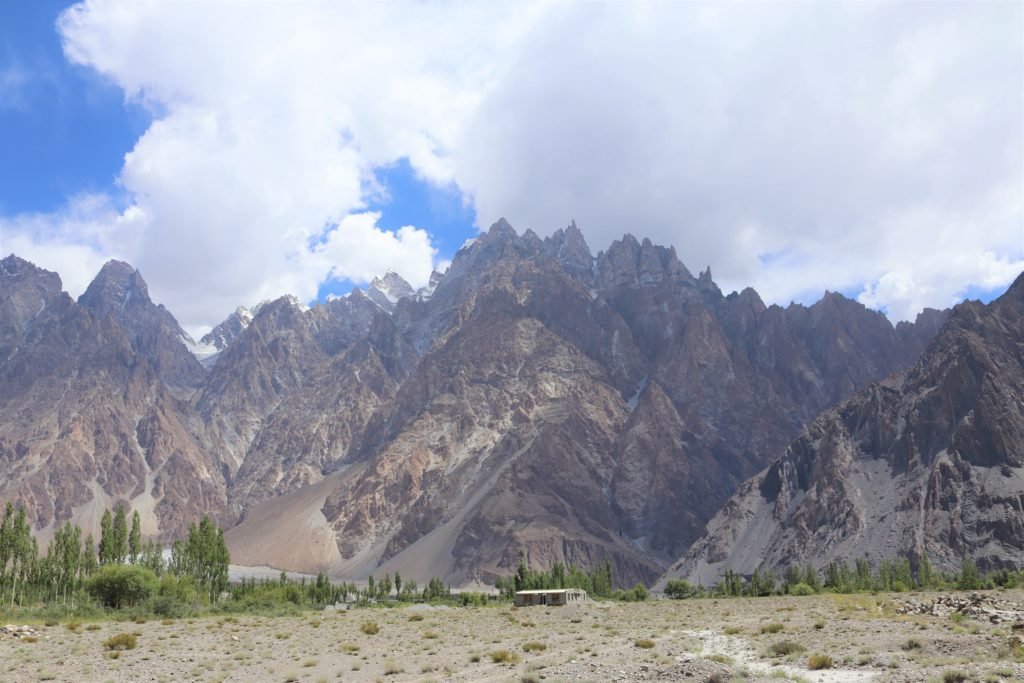
The owners will cook for you, or there is a place right across the road where you can eat, plus a few more options farther up in the village.
Passu – things to do
In addition to being a chilled out, pretty and friendly place, there are a few things you can do in and around Passu:
- The owners at Passu Peak Inn have a day trek mapped out that takes you through a couple of nearby villages and over two ‘famous’ suspension bridges
- Hussaini Bridge and Passu Bridge are the two suspension bridges, with Hussaini being known as ‘The World’s Scariest Bridge’. Actually the other one is worse (by that I mean better) – huge gaps between splintered slats strung across the river on rusting steel cables. Don’t look down.
- Also at Passu Peak Inn, ask about longer hikes with camping overnight. You’ll need a guide.
- Go to Glacier Breeze restaurant up on a hill overlooking the village. Good views, and their specialty, apricot cake. Apricots are the thing around here.
- Walk up to the Morain glacier above the restaurant
- Wander in the little village and just enjoy how peaceful Passu is
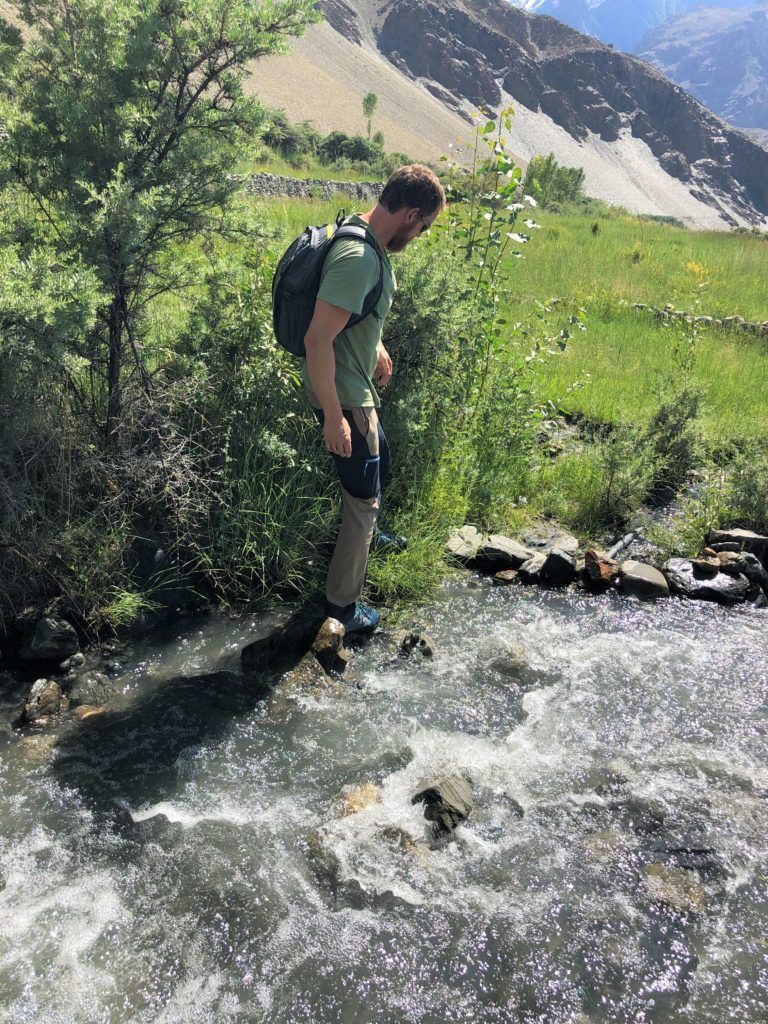
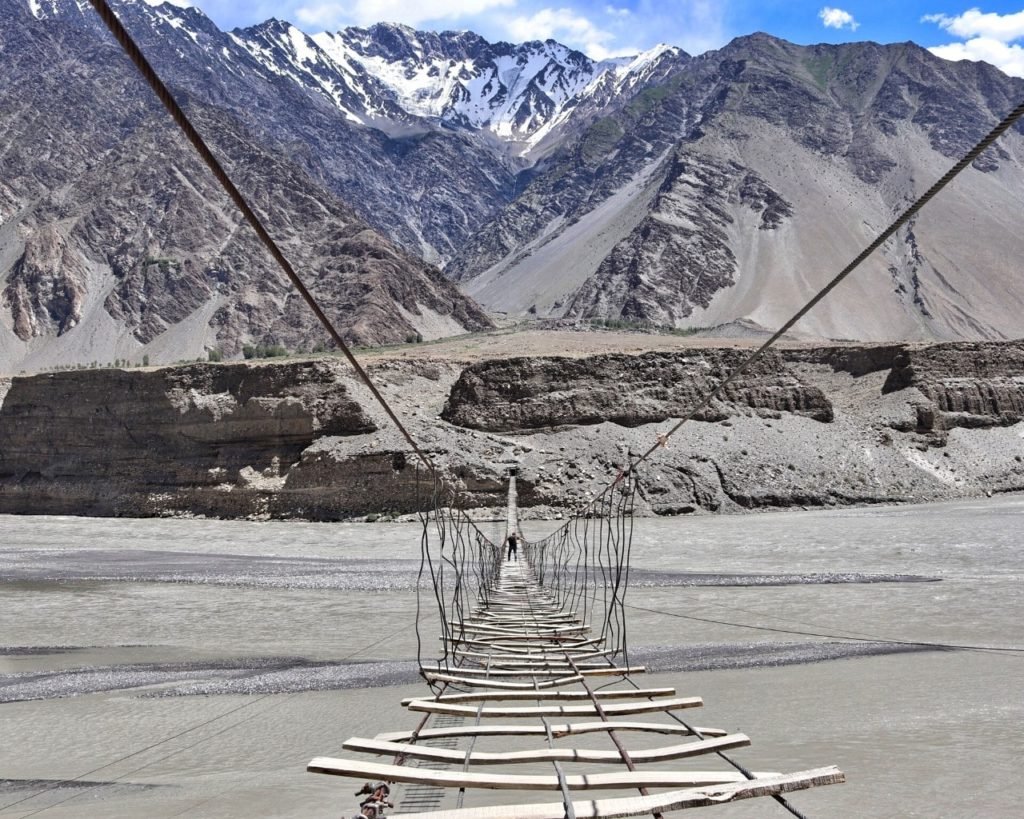
Karimabad
Karimabad is a pretty, hilly little town with a friendly and relaxed vibe, and it’s the ‘main destination’ on the highway. It’s a good base for short treks and exploring around in the area on day trips.
Karimiabad is an hour’s drive from Passu – we got there by hitching a ride out in front of Passu Peak Inn. Buses coming from Sost do pass by in the main road and you can flag one down but they go by very early in the morning (like 5 or 6 am) and not on a set schedule, so you have to be out waiting.
We stayed at Old Hunza Inn, which has awesome views down the valley. There was only one money-changer that we could find in Karimabad, at Al Barakaatt Hotel. There are probably more in the next town over, Aliabad (maybe ATMs too, I don’t know – we had cash).
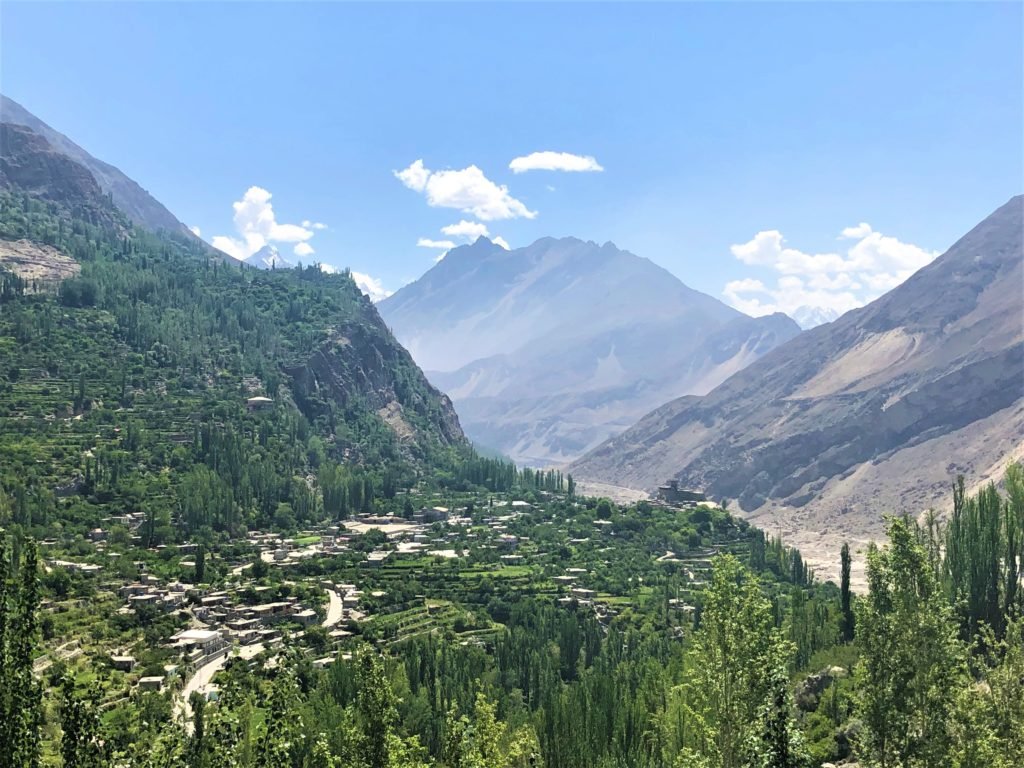
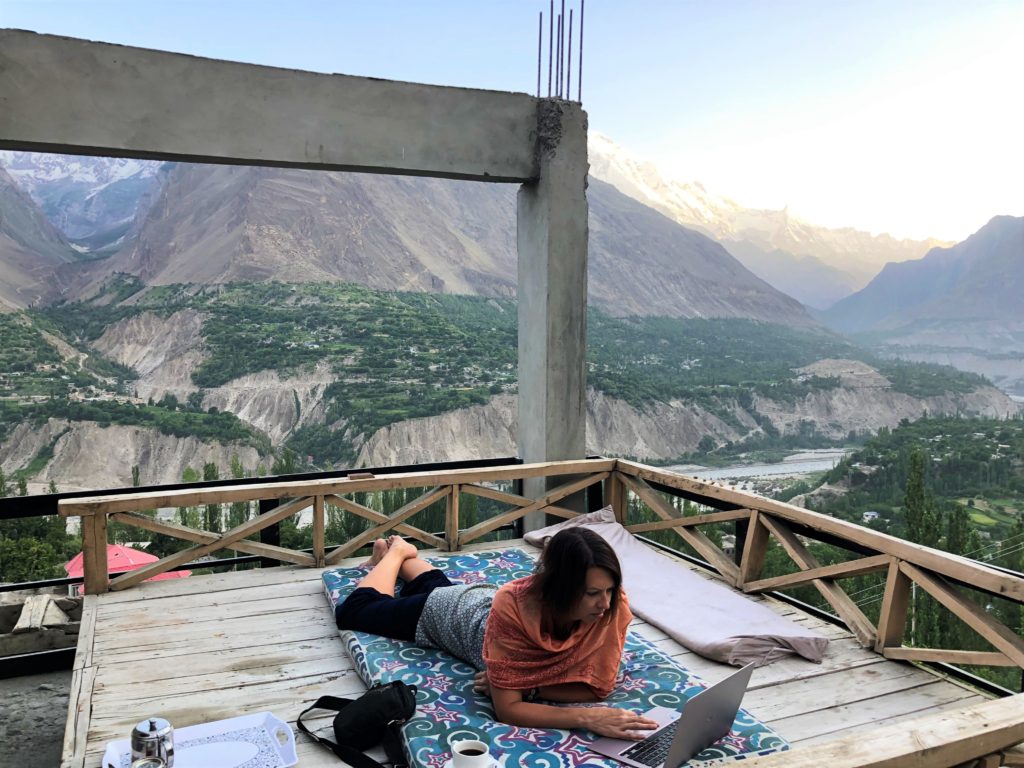
Karimabad – things to do
- Explore the village and the shops. There is a cafe too and some cute restaurants.
- Walk up to Baltit Fort and out to Altit Fort (honestly, I’d just pick one or the other)
- Ganish village. The first settlement in the Hunza Valley, dating back hundreds of years. Near the big mosque a guide will most likely pick you up (they are official and charge 500 rupees per person for entry to the old town site).
- Attabad Lake. We very easily hitched a ride to ‘The World’s Bluest Lake’ and back, from the junction below Karimabad. At the lake, we got a boat trip together with two local guys we’d met before, for 1800 rupees (for the boat).
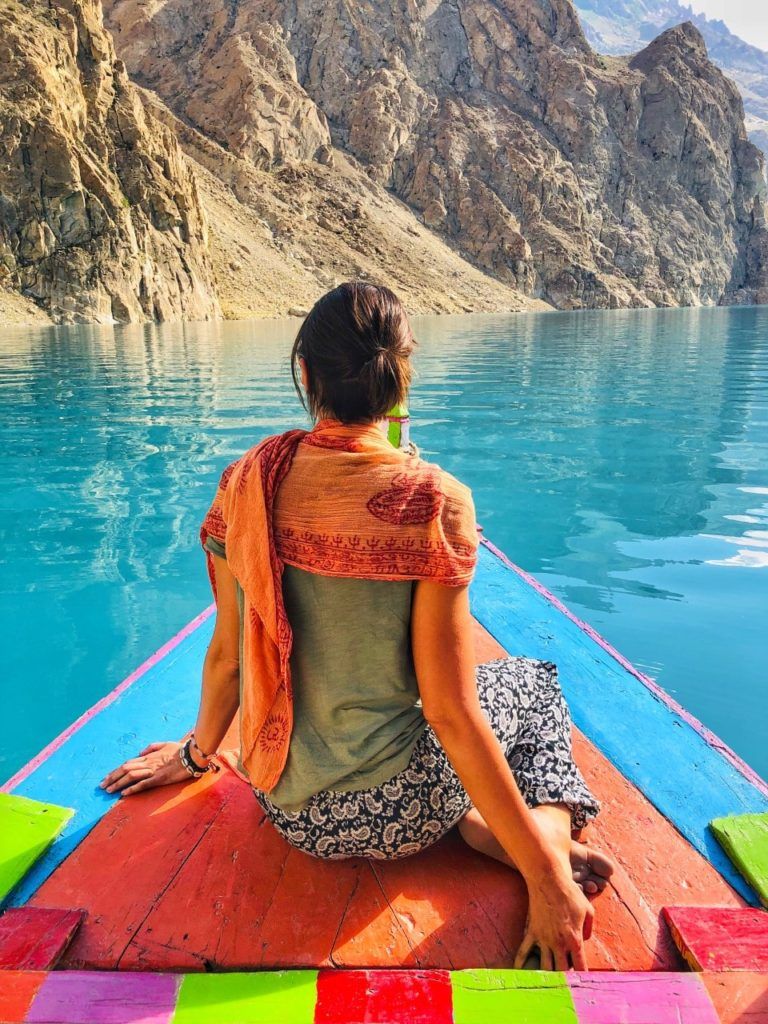
Gilgit
This is a big busy market town and the major transport hub in Gilgit-Baltistan. It’s useful for getting around, getting stuff (food, a shalwar kameez…), and getting money. Plenty of ATMs take foreign cards and there are money-changers too. There is lots of streetfood and we stayed at Madina 2 Hotel. They have a really nice garden and the manager/owner/family are extremely friendly and help with everything they can.
To get to Gilgit, leave Karimabad early and hitch a ride or get a taxi to Aliabad. Tell the driver you’re going to Gilgit and he’ll drop you off where you can get a minibus to Gilgit. It takes 1.5 hours and drops you at the station on the edge of town.
We based ourselves in Gilgit to organise a three-day trip to Astore Valley.
Astore Valley
Astore Valley is a bit more difficult to reach and harder to get around, than some other side valley destinations off the highway.
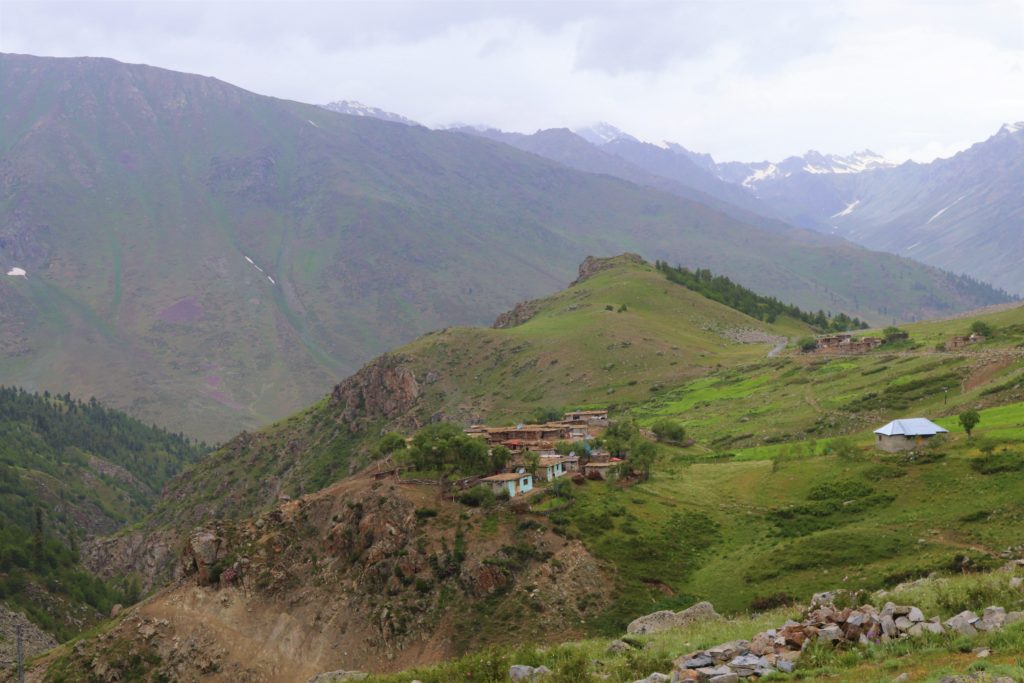
The roads into and around in Astore are very steep, rough and in places pretty patchy and prone to landslides. We hired a jeep from Lost Horizon Treks (easily facilitated by Madina 2 Hotel who called and told the agent to come over). Both driving the jeep ourselves or hiring a driver were options. Given that there is no insurance and no contract (in the words of Abdul at Lost Horizons, ‘You just take the car and go’), we decided to take the driver. It cost 7000 rupees per day for the car and the driver. Adding in petrol it worked out to 10 000 rupees (65 USD) per day for the 3 day/2 night trip (including food and sleeping).
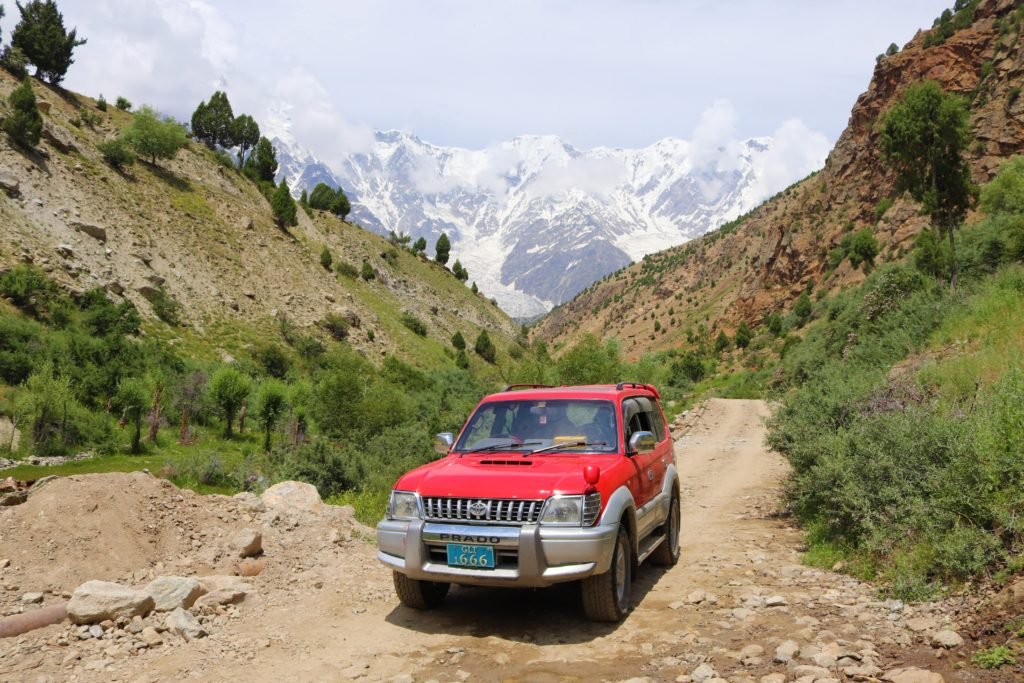
If you don’t like tours (neither do we) – no problem. This kind of arrangement is not a tour, you can go where you please and do what you want for the days you have the car, as long as you’re paying to fill up the tank. Otherwise, you can get to the main town in Astore Valley by public transport from Gilgit, but onward transport from there is pretty limited so you’d need to rely on hitchhiking and luck, as there isn’t a lot of traffic.
Astore Valley – three-day trip
Our three days went like this:
Day1. Drove to Astore city (calling it a city is a stretch).
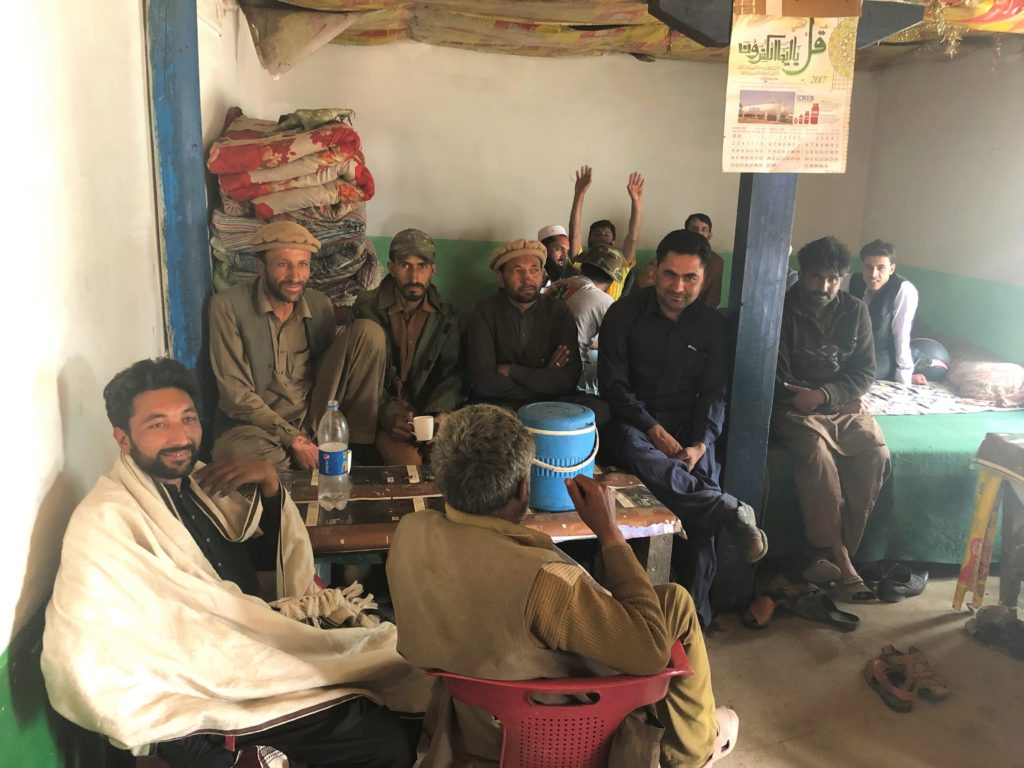
We ate and then carried on to the driver’s village. From there we took a walk around and a short trek to the next village, where we had chai in some people’s homes. We slept at the driver’s family home. Seriously kind hospitality.
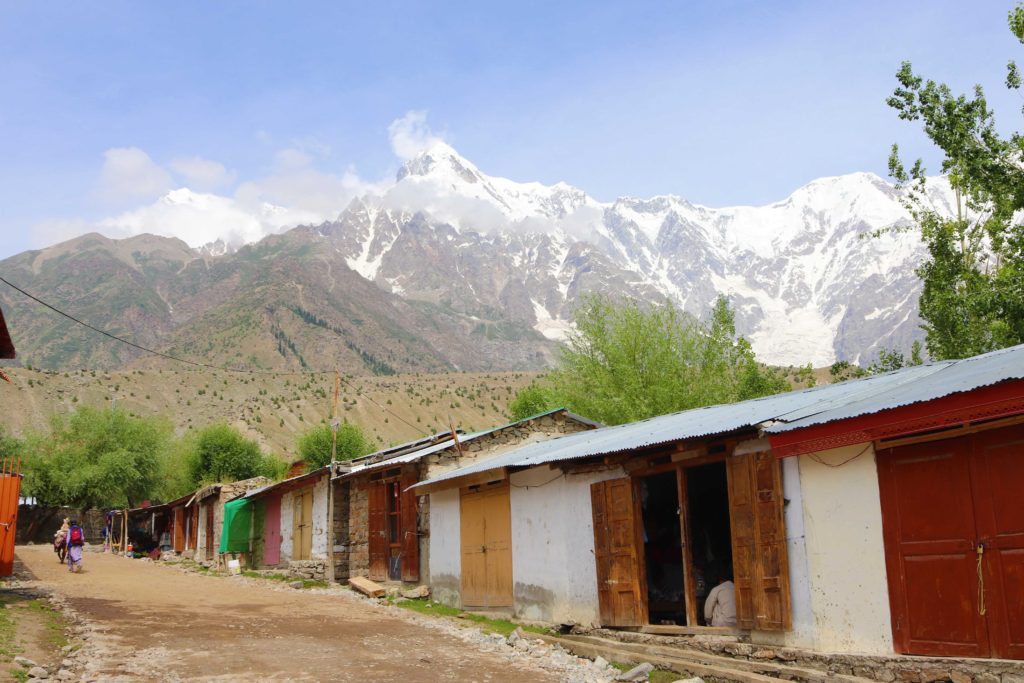
Day2. After breakfast we drove up to Tarashing to walk in the foothills and for views of the Nanga Parbat range and Raikot peak.
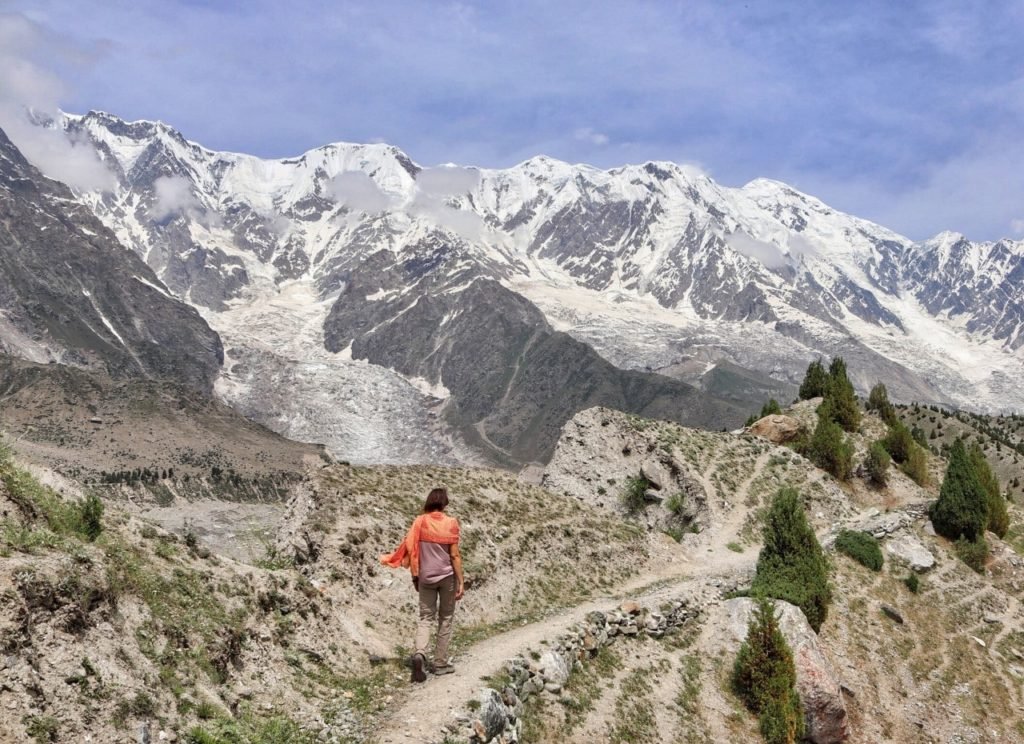
Then we drove on to Deo Sai National Park and stopped at Sheosar Lake. We camped in the park (we had a tent thrown in with the car). At this point we were up at around 4000 metres – it was cooooold, even in summer.
Day3. Drove back to Gilgit, stopping at villages on the way. We also stopped at Rama Lake and walked up to the lake.
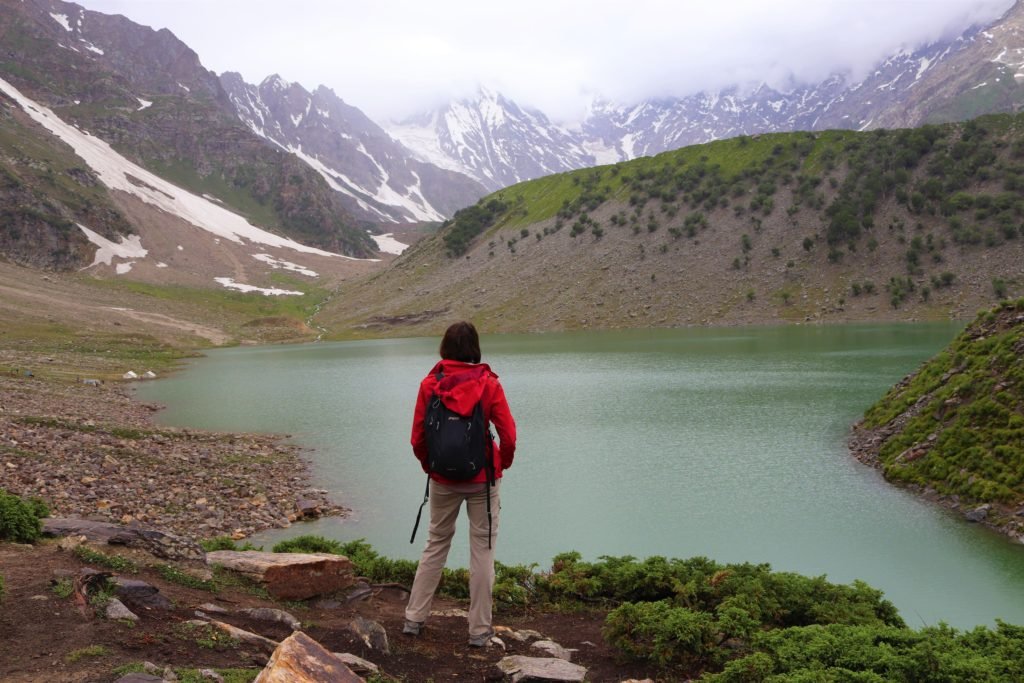
Getting from Gilgit-Baltistan to Islamabad
Back in Gilgit, the manager at Madina 2 Hotel not only called the bus company for us and booked seats, but then he drove over himself with copies of our passports and picked up the tickets. Otherwise, go to the bus station in Gilgit a day in advance to arrange the trip to Islamabad.
NATCO runs buses at 08.00, 10.00, 11.00, and 1 pm. The buses are clean and comfortable with decent leg room. You can take a minibus all the way but not only would this take forever, it would also be dangerous.
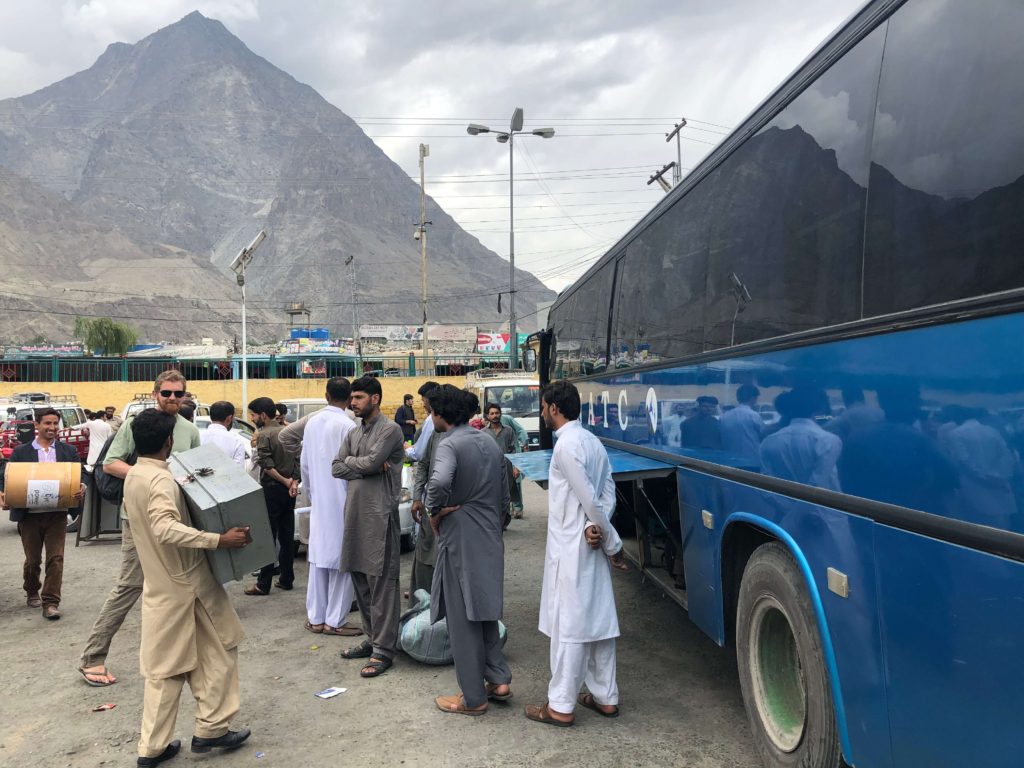
Tickets cost from 2100 to 2500 rupees depending on the bus itself and departure time. The bus will stop every two to three hours for food and bathroom breaks. Bring a copy of your passport to the office when you book, and the bus driver will ask you for another eight copies or so before departure, for checkpoints.
To my relief the bus crosses Barbursar pass (a little over 4000 metres) before dark – there is some steep and scary driving and a lot of halting and rocking back and forth and inching around tight hairpin bends, on this trip.
It takes around 15 hours to reach Rawalpindi where all the buses go to and from Islamabad. Try to get on the earliest bus so you can reach Islamabad before midnight instead of the middle of the night. From Rawalpindi, take a cab to Islamabad (about 400 rupees). We cabbed straight to Jasmine Inn in sector G8.
Onward travel from Islamabad
For ideas about what to do when you reach the end of the highway, read this post:
Peshawar and Swat Valley Travel Guide: Itinerary and Tips
Read more
Here’s the story about our adventures on the Karakoram Highway:
The Karakoram Highway: Hitching and Hiking in Northern Pakistan
Or to read more about traveling in Pakistan in general, check out my stories from the road.
And, if you’re a fan of epic roadtrips in general (we definitely are) – how about self-driving the Pamir Highway from end-to-end?




This Post Has 2 Comments
I’m a bit late to the party, but great inspiration reading about your trip along the Karakoram Highway (and especially the crossing into/from China) as I’m planning something similar myself this year!
David (who like Oyv travels on a curious looking Scandinavian passport which at times peaks the interest of border guards, like at a border between Russia and China where it after a long 20 min came back with the question “is this an ordinary passport?”…)
Hahahah…thanks! Good luck and enjoy! Now I’ve got one of those curious-looking passports myself, as well, looking forward to trying it out:)